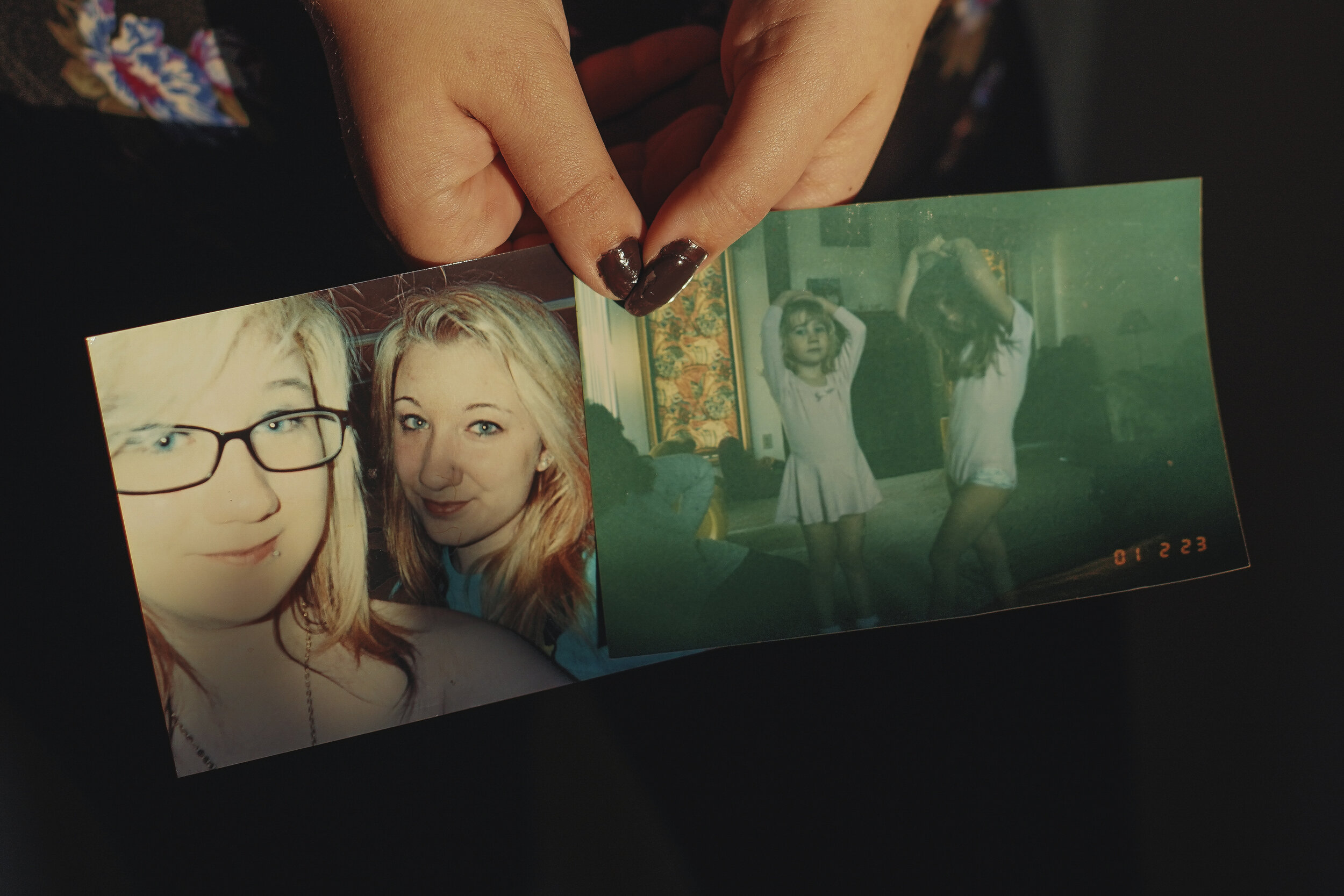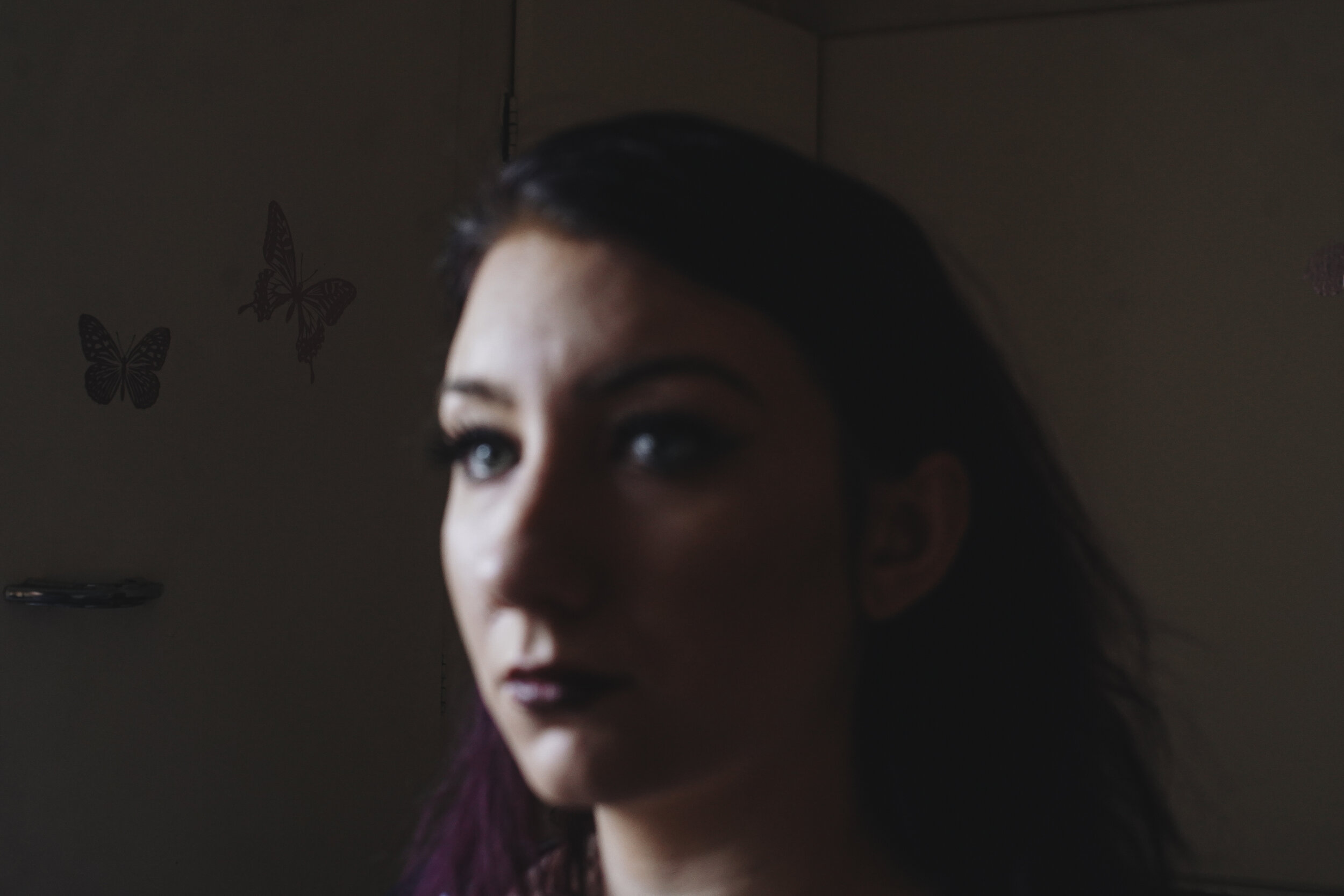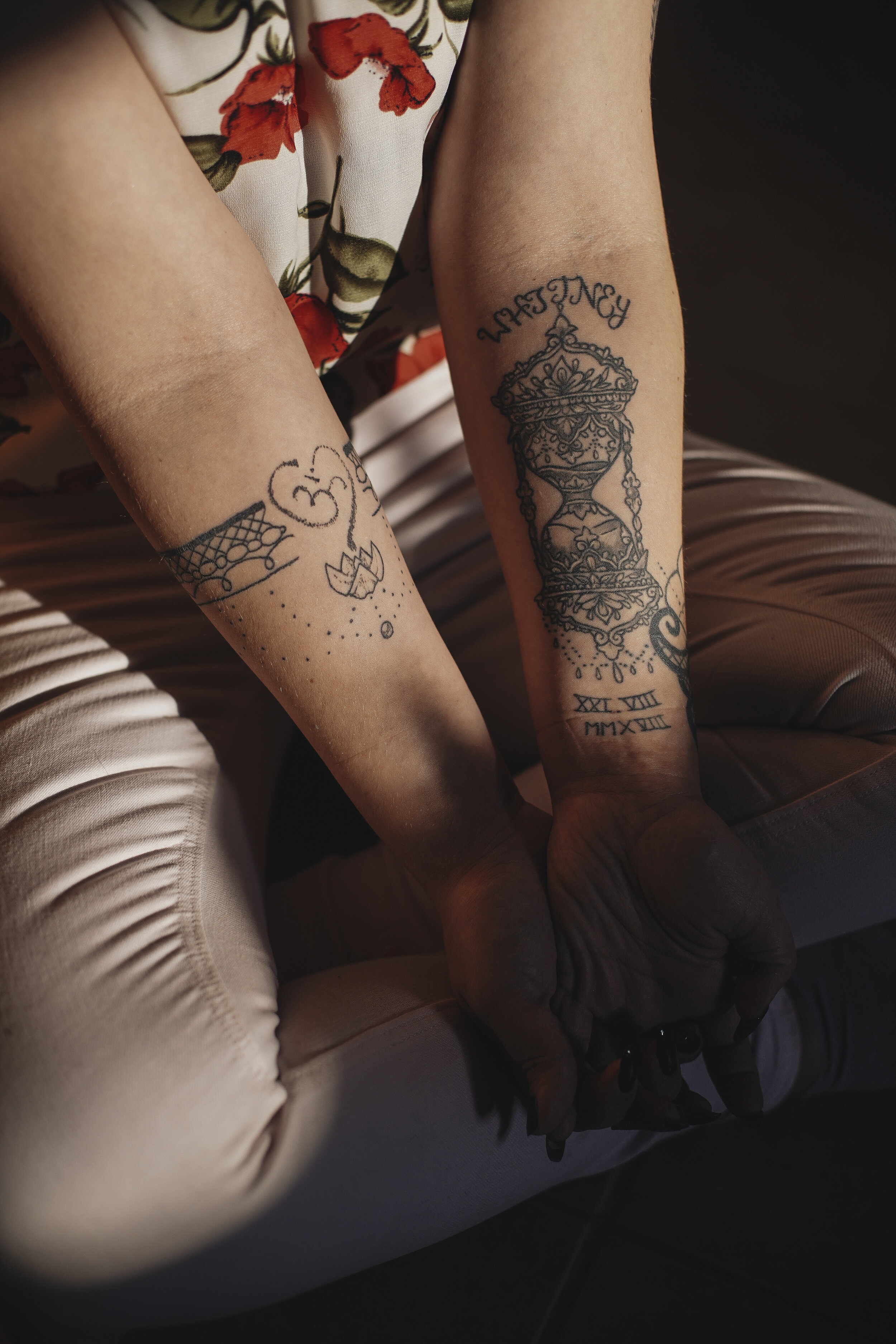PORTRAITURE
The Rodagues, 2018
‘The dreamers,"‘ Jordan, Alan, Brandon, and Dwayne, from rap group the Rodagues, July 2018, Buffalo, N.Y.
Taylor, FOR THE NEW YORK TIMES, 2019
Taylor (last name withheld for anonymity) stands for a portrait in Grand Island, N.Y. Taylor was sexually assaulted by another student from Niagara Wheatfield High School. Although her attempted rapist pleaded guilty and Taylor complained to the school, he attended almost the entire school year. It wasn't until he was sentenced to probation and Taylor’s fellow students organized a walkout that he was expelled. (Read more in The New York Times)
Eladio Beltran, for The New York TimeS, 2019
Eladio Beltran, 32, stands for a portrait with two of his four children, Hady, 12, and Nisi, 10, in upstate New York. Beltran, who comes from a family of 12 in Oaxaca, Mexico, quit school in the sixth grade to work and support himself and be 'less of a burden' on his family. His father had been confined to a wheelchair after being shot when Beltran was 8, and could not work; his mother also could not find work in their area. At 14, Beltran crossed the Arizona desert to come to the United States. To get a job, he told employers he was 21, and began picking strawberries in Florida. Years later, after moving to New York, he met and married his wife; they are now raising four children. The demands of parenting put a strain on their life, especially since neither of them have a driver's license. In 2008 and 2014, Beltran was been pulled over by police and picked up by ICE, and does not know how his immigration status will turn out now. After being deported back to Mexico, he said he lasted 30 days before missing his wife and children drew him to make the journey across the border again. "It's hard to live every day with this (...) sorrow," Beltran said. "It's hard to describe this feeling (...) that your family, you do not see again." He said he told his eldest daughter he may be away for 30 days or so again but the reality is that it could be years. Beltran, who said he does not want to expose his children to the violence in Mexico, hopes his children can graduate and become professionals in the U.S., but if he is deported again, he may try to apply for permanent residency in Canada. (Read more in The New York Times)
Farmer Mary Schmidt, for The Wall Street Journal, 2020
Mary Schmidt stands for a portrait on her farm in Conneautville, Penn. Falling milk prices have sunk the Schmidts deeply in debt. Earlier this year, the Schmidts shut down their dairy business, when they owed more than $1.8 million for equipment, construction, veterinarian bills, animal feed, overdue taxes and mortgages on their home and land, according to creditor claims. The Schmidts are trying to diversify revenue, with plans to raise greenhouse crops, but it is even harder to try to dig out of debt during the pandemic. (Read more in The Wall Street Journal)
SErgeant Gary Beikirch, for The Wall Street Journal, 2019
Sergeant Gary Beikirch was a medic on a Green Beret Special Forces A team during the Vietnam War. For his actions trying to save his fallen comrades during a North Vietnamese attack on a U.S. Special Forces outpost near the Laotian border, he was awarded the Congressional Medal of Honor. Beikirch was shot three times, but insisted on being carried out into the battle to treat the wounded. During that same attack, he lost a dear friend in 15-year-old Montagnard guide and bodyguard, Deo, who had thrown himself bodily over Beikirch during the fray, and given his life to save him. After his return to the U.S., Beikirch went into seclusion, living in a cave on Mount Adams in New Hampshire for two years. When he received word via P.O. box that he had been awarded the Medal of Honor, he went to Washington to receive it, but once home, he placed it back in his duffel bag and did not remove it for seven years. “Here I had gone into a cave to try to forget about Vietnam, and now they’re going to give me a medal for something I’m trying to forget,” Mr. Beikirch says. Years later, Beikirch began a 33 year career as a school counselor, serving middle schoolers as a way to honor Deo's memory. Beikirch is photographed at his home in Greece, N.Y. (Read more in The Wall Street Journal)
TINNING CEO Robin Scheppner, for The Wall Street Journal, 2019
Robin Scheppner, president and CEO of American Tinning & Galvanizing Company, stands for a portrait in Erie, Pa. Though Erie has lost over 30% of its population since 1960 and continues to struggle economically, Scheppner says her company has managed to survive by keeping costs low and maintaining good relationships with other local manufacturers. (For The Wall Street Journal)
ARTIST VALENTINO DIXON, for L’Obs Magazine, 2018
Artist Valentino Dixon, 49, stands for a portrait in his mother's yard in Buffalo, N.Y., just a week after his release from prison after 27 years behind bars. Dixon was exonerated from a 1991 murder charge partially due to interest in his beautifully rendered landscapes of golf courses. His drawings garnered interest from Golf Digest, which teamed up with Georgetown University law students and published an investigative story in 2012, leading to Dixon's eventual freedom in 2018. (Read more in L’Obs magazine)
AUTHOR MELANIE FINN, For The Telegraph Magazine, 2016
Author Melanie Finn and her husband, filmmaker Matt Aeberhard, are raising their twin daughters, Molly and Pearl, in a self-sustaining home in remote Kirby, Vermont. Their goal is to source water, heat, and electricity all from nature, and only use minimal propane for cooking. They have a sustainable forestry plan for their over-300 acres, and they are also rehabilitating the land for the wildlife.
BRIANNA JAYNES, FOR VOX, New York, 2020
Brianna Jaynes, 24, stands for a portrait at her home in Westfield, N.Y. Jaynes is a speaker in recovery who speaks nationally about addiction and overdose awareness in memory of her sister, Whitney, who died in 2018 after a long battle with addiction. Below imagery: photographs of Brianna and Whitney together as children, the purple butterflies Brianna keeps around her home as reminders of Whitney, and Brianna’s tattoos commemorating Whitney. (For Vox Media)
Rapper Gaines, 2019
Buffalo native and rapper Tearle Gaines, photographed at home in Buffalo, N.Y., July 23, 2019.
Tabea, Westfjords, ICeland, 2017
Tabea, at a secret hot spring in the Westfjords, Iceland, 2017
Survivors, women’s March, 2017
Cancer survivors Katie Fink of Evan, Mich., and Kim Frost of Scandia, Mich. bared their chests for the Women’s March on Washington, the day after President Trump’s inauguration, January 21, 2017. “I'm here representing the women who couldn't be here," said Fink. A woman born today has a 1 in 8 chance of being diagnosed with breast cancer during her lifetime, according to the National Cancer Institute.
Rapper Desiree Kee, 2019
Desiree Kee, 24, is a rapper living in Buffalo, N.Y, whose music champions women’s safety and Black Lives Matter. In her track “Troubled Child,” Kee called out domestic violence perpetrated by a male rapper she witnessed in her neighborhood. Kee also helped the survivor directly, hosting a rent party in early 2019 to help the woman leave the dangerous living situation. Another of Kee’s songs pays tribute to India Cummings, a young Black woman who died in Buffalo police custody. Kee’s raps have caught her some flack in the Buffalo hip hop community, but she continues to speak out and to offer support for other women in her community, and to host events focused on promoting women’s empowerment.
Whistleblower Siobhan O'Connor, for The New York Times, 2019
Whistleblower Siobhan O'Connor stands for a portrait in East Aurora, N.Y., Saturday, September 14, 2019. O'Connor, who formerly worked as an administrative assistant for Bishop Richard Malone, leaked documents that exposed his handling of sex abuse cases in the Buffalo diocese. Many in the diocese are now calling for Malone's resignation. (For The New York Times)
The Parks, For The New York Times, 2019
Keith and Holly Parks stand for a portrait at their home in Holley, N.Y., on Monday, June 3, 2019. Holly's daughter and Keith's stepdaughter Heather Roselli was killed in a state-run group home in 2017. The Parks are part of a lawsuit being filed by family members of individuals who have lived at the group home alleging charges of gross neglect and abuse. "We've always said we're just going to try and get justice for Heather, first of all, and hopefully make a difference in the system," said Keith. Less than six months before her death, Heather had made a phone call expressing fear about losing her life at the group home. Her family had discussed moving her, but before that happened, she was dead from injuries resulting from improper restraint by two care workers at the Pierce Street group home in Webster, N.Y. (Read more in The New York Times)
Edward shingman, for The New York Times, 2020
Edward Shingman, 30, stands for a portrait at Onondaga Lake Park in Syracuse, N.Y. Mr. Shingman went grocery shopping for his family on Monday. He was wearing a respirator mask, as he has been while in public for over a week. While waiting in the checkout line, he was suddenly verbally abused by the man in line in front of him. "It's you people who brought the disease," Mr. Shingman recalled the man hissing. "He kept saying, 'I ought to knock you out. You are sick. I ought to just kill you." Mr. Shingman, who was born in the United States, said the man's words made him feel, for the first time ever, a fear of being Asian. Now he said, "I feel like I'm being invaded by this hatred. It's everywhere. It's silent. It's as deadly as this disease." Mr. Shingman wears a respirator mask here to continue isolating his family from the COVID-19 virus and to partially obscure his identity. His surname is a pseudonym. (For The New York Times)








